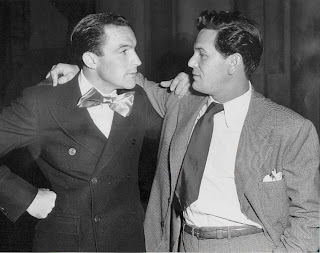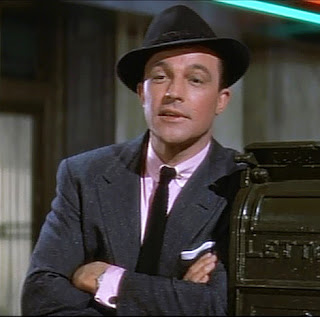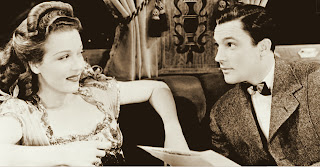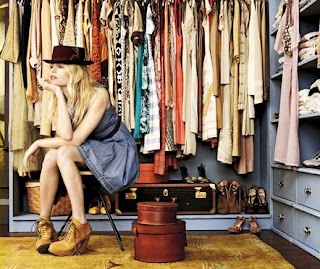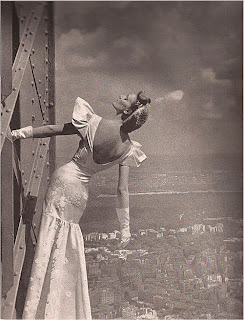
In Spring 2012, we'll welcome the musical classic "Singin' in the Rain"´s 60th Anniversary, which was first released on March 27, 1952 in New York City. Several DVD collections have sprung up celebrating the MGM's "Technicolor Musical Treasure." Although not transferred to Blu-ray format yet, there is a two disc Special Edition (2002) highly recommendable (digitally restored to 1.33:1 fullscreen format with a pristine mono soundtrack), containing a PBS documentary on The Arthur Freed Unit:

"Musicals, Great Musicals", extracts from films which originated some of the dance numbers such as "The Broadway Melody" (another 'Broadway Melody' film was planned for 1942 with Gene Kelly and Eleanor Powell, but production was suddenly cancelled).

Plus an audio commentary led by Debbie Reynolds and "What a Glorious Feeling" documentary on the making of "Singin' in the Rain". Based on a story penned by Adolph Green & Betty Comden, the original idea was to concoct a plausible story for the screen, integrating a vintage catalogue of songs composed by Nacio Herb Brown and Arthur Freed. MGM had hopes of reproducing a similar effect to the sensation caused the previous year by "An American in Paris" (a brilliant fusion of ballet and romance with Leslie Caron, accompanied by George Gershwin's music) which had earned Gene Kelly an Honorary Oscar.

"Singin' in the Rain" would be the second and most triumphal collaboration of Gene Kelly and Stanley Donen. They previously had directed "On the Town" (1949), an innovative musical filmed on real spots in New York considered by Kelly as his personal favorite - a choice shared by Pulitzer Prize-winning author John Updike who singled out "On The Town" in a Kelly tribute. Kelly and Donen had seen Debbie Reynolds sing "The Aba Daba Honeymoon" in the film "Two Weeks with Love" (1950).

Kelly was so impressed by her innocence that he insisted Reynolds be cast to play Kathy Selden, the ingenue heroine in the Comden & Green story. Kelly had achieved his early fame with Judy Garland in "For Me and My Gal" (1942) directed by choreographer pioneer Busby Berkely.

In "Cover Girl" (directed by Charles Vidor in 1944), Gene Kelly was paired with Rita Hayworth whom he embraced sensually under a terrific Jerome Kern-Ira Gershwin score. Some of the audacious numbers featured in "Cover Girl" were echoed in "Singin' in the Rain", as in the case of "Make Way for Tomorrow" (a trio routine played to the hilt in the number "Good Morning", and with grimmer connotations in the final Kelly-Donen musical "It’s Always Fair Weather" in 1955).
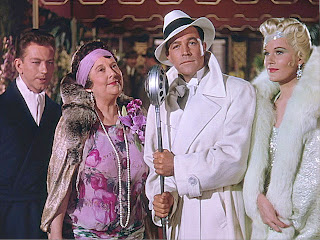
"Singin' in the Rain" opens with movie stars Don Lockwood (Gene Kelly) and Lina Lamont (Jean Hagen, nominated to an Oscar for Best Supporting Actress for this key role) arriving to a premiere of a silent film in 1927 presented by the gossip queen Dora Bailey (based on real Louella Parsons). The plot revolves around the falsehoods behind a spectacular façade in Tinseltown, the magazines linking movie stars romantically to increase their popularity, and the trauma suffered by many silent actors who couldn't adapt to the talkies in the Pre-Code era.

"We wanted Lina Lamont to be a combination of Mae Murray and Judy Holliday in 'Born Yesterday', Gene Kelly explained to his biographer Clive Hirschhorn, "and as Jean had played in 'Born Yesterday' on the road, we tested her and she was just perfect". Lina was allegedly based on the silent picture star Norma Talmadge who bombed during the transition to talkies.

The casting of Debbie Reynolds proved to be more controversial. She was then an inexperienced performer who would struggle during exhausting rehearsals to keep up to Kelly's impressive dancing technique. In 1962 (TV Radio Mirror) Reynolds had declared: "Gene would come to see what progress I was making. I couldn't dance a step, he'd just smile and say 'we'll have to work a little harder', he had me on sound stages day after day, studying modern dancing with Carol Haney and Jeanne Coyne and tap & ballet with Ernie Platt... I owe more to him than I can ever repay. He literally willed me to dance".

In 1998 she reiterated her feelings: "Gene taught me how to work beyond all reason. He wouldn't let me leave until I was letter-perfect". No doubt Kelly was a noted perfectionist admitted by himself: "I've always tried to reach for perfection, knowing that I could never achieve it".

Although Reynolds had said Louis B. Mayer imposed her against Kelly's protests, in sharp contrast to her story, Gene Kelly claimed in an interview for Tom Johnson & David Fantle in 1994: "That is patently untrue. Mayer wasn't even at the studio in 1952 when we shot the picture." In the early 1970's Kelly had assured Hirschhorn that "no one else at the studio could have touched it. I insisted she be used, and never had any meeting with Mayer concerning "Singin' in the Rain".
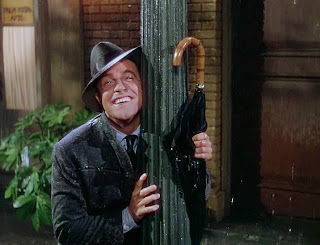
The most memorable dance sequences in the film were the title number "Singin' in the Rain" (a delightfully wet solo performance by a literally feverish Kelly, that will go on burning our enraptured hearts): "I kiss this girl good night, and I'm so in love I don't care if it's raining, I put my umbrella down and act like a eight-year-old kid, sloshing through puddles and being happy" (Gene Kelly explained to Graham Fuller), "Broadway Rhythm Ballet" with Cyd Charisse, "Moses Supposes": "Donald and I rehearsed that dance for days, but most critics dismiss it as a zany Marx Brothers romp," "Good Morning", and the hysterical "Make 'em Laugh" (a brilliant Donald O'Connor's slapstick tour-de-force).

Gene Kelly made some significative changes in the script, creating a slightly satirical portrayal of Hollywood's sound transition. The same furniture from "Flesh and the Devil" (starring John Gilbert and Greta Garbo in 1927) appeared in Don Lockwood's home set, and exact replicas of the Cooper-Hewitt lights were shown. Rita Moreno playing Zelda Zanders, Lina's informant friend, is probably inspired on Clara Bow.

Also, the protagonist Don Lockwood had similarities with the real Gene Kelly (his career in MGM, his ascension to the Hollywood firmament, his stern self-confidence and his romantic nature - he'd proposed his first wife Betsy at the fountain of the Plaza Hotel at 5:00 am, then whisked her off to Hollywood when he was signed by David O. Selznick).

Don jumps into Kathy's jalopy and both end sneering at each other. Later, Don's studio head — R.F. Simpson (Millard Mitchell) — exhibits during a party a Vitaphone talking picture as a homage to the original DeForest Phonofilm. To Don's astonishment and Kathy's embarrassment, she pops out of a surprise cake at the party revealing herself as a show girl with aspirations of becoming a serious actress.

After leaving the R.F. Simpson's party, Don sings "All I Do is Dream of You" in his bedroom, but this number was cut from the final release (only was seen at the screen previews in December of 1951).

Don and Kathy fall in love while working at Monumental Pictures, but Lina (Don's auto-proclaimed girlfriend) needs another actress who lip-synchronizes her screen dialogues so as her awful Bronx accent remain a secret. Later she'll conspire to relegate Kathy to a mere contract dubbing player (à la Marni Nixon - who professionally dubbed Natalie Wood, Deborah Kerr and Audrey Hepburn in musicals). Ironically, Reynolds herself was dubbed by Betty Noyes in the songs "Would You?" and "You Are My Lucky Star."

After the film release, Gene Kelly would move to Europe (due to tax deductions) amidst the HUAC Committee's investigation of Kelly's wife Betsy Blair and the Revuers cabaret founded by Green, Comden and Judy Holliday. Kelly was a member of the Committee for the First Amendment and an officer of the Screen Actors Guild during the strikes of 1946. An article in American Legion Magazine by the journalist J. B. "Doc" Matthews attacked "Singin' in the Rain" as a pro-communist movie.

"Singin' in the Rain" was a big success for MGM, and has been steadily ranked as one of the greatest musical films of all time. It was praised by Francois Truffaut (influencing "La nuit américaine" in 1973) and the French New Wave critics. John Russell Taylor & Arthur Jackson see the Kelly character as "the open, confident, brash, straight-forward American male, with a smile on his face for the whole human race" ("The Hollywood Musical", 1971).

In 1989, "Singin' in the Rain" was among the first 25 films chosen for the newly established National Film Registry for films that are deemed "culturally, historically or aesthetically significant" by the United States Library of Congress and selected for preservation.

"Singin' in the Rain" generates even today (especially in our society beset by deconstructive tools) an immersive scope of representations through a remythicization of its musical embers attached to our collective memory. The contrasts between its scenic tropes — silence and sound, fame and ignominy, phoniness and happiness — elevate our joyful experience to a mythical zenith. According to Claude Lévi-Strauss, "the seemingly random surface structure of a myth masks contradictions that are real and therefore unresolvable."

Gene Kelly and Cyd Charisse - Behind the scenes of "Singin’ in the Rain" (1952)

"The Broadway Rhythm Ballet" (a long segment rejected in the context of its inclusion in 'The Dueling Cavalier' -a movie inside the movie) guides us through the progression of a young Broadway hoofer who makes his way towards success, inevitably tempted by a traditional noir vamp (Cyd Charisse wearing green flapper outfit and shoes). In stark contrast, Charisse danced later with Kelly wrapped in a 25-foot white silk scarf billowed by a wind machine. "Her beauty was breathtaking", Debbie Reynolds said of Cyd after her passing (June 17, 2008).

In the number "You Were Meant for Me" in which Don declares Kathy his love, a wind machine is exposed figuring as an element of demystification of romantic musical numbers. We also can find a synecdochical side in the flow of the storytelling, accentuated in the juxtaposing of Gene Kelly and Debbie Reynolds with their billboard images in "You Are My Lucky Star."
'You Are My Lucky Star' Outtake: Debbie Reynolds singing 'You Are My Lucky Star'. This scene would have come after Gene Kelly sung 'You Were Meant for Me'.

"As Gene Kelly danced and sang obliviously in the rain, he became an indelible image of Hollywood itself" -Michael Coffey in "The Irish in America" (1997).
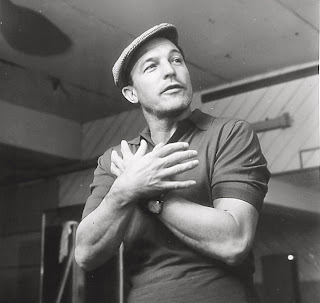
Gene Kelly (1912-1996) was chosen number 15 on AFI’s millennium list of most legendary actors. "He once said he hoped most that he had made people happy", said daughter Kerry Kelly. Speaking of "Singin' in the Rain", Gene Kelly told People magazine, "The picture was done with joy, and it brings joy. That's what I always tried to do."
Article first published as
DVD Review: Singin' in the Rain - 60th Anniversary of a Glorious Feeling on Blogcritics.
 It was Hedy's idea for a radio-controlled torpedo, guided by a signal that couldn't be intercepted - a technology she called "frequency hopping."
It was Hedy's idea for a radio-controlled torpedo, guided by a signal that couldn't be intercepted - a technology she called "frequency hopping." Hedy Lamarr and John Garfield in "Tortilla Flat" (1942) directed by Victor Fleming
Hedy Lamarr and John Garfield in "Tortilla Flat" (1942) directed by Victor Fleming Born Hedwig Kiesler to Jewish parents in Austria, Hedy had married a wealthy arms manufacturer named Fritz Mendl.
Born Hedwig Kiesler to Jewish parents in Austria, Hedy had married a wealthy arms manufacturer named Fritz Mendl. Her career took off. But the war in Europe was never far from her mind. And a chance dinner party with a Hollywood composer named George Antheil changed everything.
Her career took off. But the war in Europe was never far from her mind. And a chance dinner party with a Hollywood composer named George Antheil changed everything. Like her, Antheil tinkered with ideas. He was famous for composing an avant-garde symphony using unconventional instruments, not the least of which were 20 player pianos, all synchronized. And that gave the two of them an idea: If pianos could be synchronized to hop from one note to another, why couldn't radio signals - steering a torpedo - hop as well? Their inventive partnership was born.
Like her, Antheil tinkered with ideas. He was famous for composing an avant-garde symphony using unconventional instruments, not the least of which were 20 player pianos, all synchronized. And that gave the two of them an idea: If pianos could be synchronized to hop from one note to another, why couldn't radio signals - steering a torpedo - hop as well? Their inventive partnership was born. "Hedy's idea was if you could make both the transmitter and the receiver simultaneously jump from frequency to frequency, then someone trying to jam the signal wouldn't know where it was," said Rhodes. Source: www.cbsnews.com
"Hedy's idea was if you could make both the transmitter and the receiver simultaneously jump from frequency to frequency, then someone trying to jam the signal wouldn't know where it was," said Rhodes. Source: www.cbsnews.com Optimum use of IT resources, Lower cost of ownership: Typically, internally hosted and managed hosting systems include multiple costs in case of system failures, maintenance and repair costs. Also, for a more efficient business hosting whether it is managed servers, network, databases, or other IT components, a managed hosting provider offers mid-sized companies saving on getting in-house infrastructure and helps achieve the scalability to expand based on changing needs and upgrades.
Optimum use of IT resources, Lower cost of ownership: Typically, internally hosted and managed hosting systems include multiple costs in case of system failures, maintenance and repair costs. Also, for a more efficient business hosting whether it is managed servers, network, databases, or other IT components, a managed hosting provider offers mid-sized companies saving on getting in-house infrastructure and helps achieve the scalability to expand based on changing needs and upgrades.

